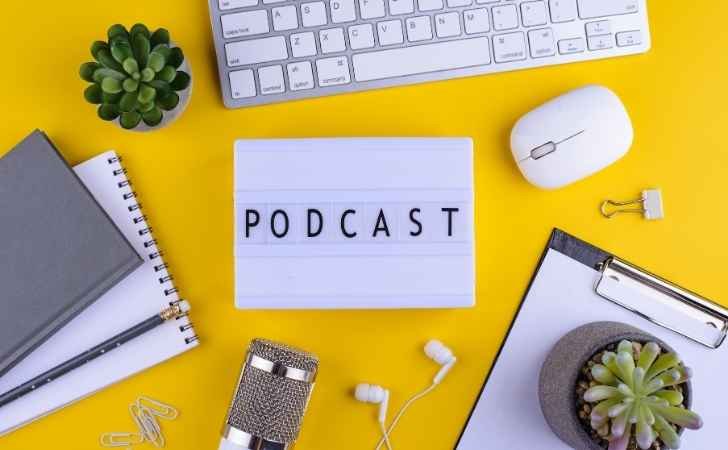AFFILIATE DISCLOSURE
This post may contain affiliate links. An affiliate means Escribr may earn referral fees if you make a purchase through our link without any extra cost to you. It helps to keep this blog afloat. Thanks for your support!
Did you know that by visiting this blog, you are doing good in the world? READ THIS.
Do you transcribe podcasts? If so, you could be charging more than you think. In this post, we’ll show you a strategy that can help you earn transcribing podcasts.
Traditional Transcription Rates:
Most transcription companies charge per audio minute or hour. This means you could be earning between $20 and $60 per hour transcribing podcasts.
But what if you could charge more?
Offering More Than Just Transcription
The key to charging more is to offer more than just transcription.
Podcasters need their podcasts transcribed to reach a wider audience and get more traffic.
So, why not offer additional services that help them achieve these goals?
Consider providing a content repurposing service alongside your current transcription offering.
Extract the best quotes from the transcript and turn them into social media posts, write show notes, create audiograms, social media calendar, or email that promotes the podcast episode.
These can be a few options.
Now, adding additional services can be exciting but also overwhelming.
No worries. The world of AI is here to lend a helping hand.
Imagine having a team of tireless, virtual assistants working behind the scenes, optimizing your workflows and automating tedious tasks.
That’s the magic of AI tools for add-on services.
Here are a few ideas:
Social Media Posts
1. Prettysmart
Create stunning social media posts, bursting with personality, crafted in minutes. No graphic design degree needed, no writer’s block blues. Introducing PrettySmart, your AI-powered sidekick for effortlessly creating eye-catching content that gets you noticed.

- Upload your brand collateral: logos, fonts, colors – it’s your visual fingerprint.
- Let AI be your creative muse: generate original, engaging copy that fits your brand voice perfectly.
- Tons of templates at your fingertips: choose from a diverse library to jumpstart your post design.
- Free stock photos galore: ditch the photo-hunting headaches, find the perfect visuals instantly.
- Simple editing, big impact: drag, drop, customize – it’s like playing with digital building blocks.
2. Automata
Automata is an AI-powered content multiplier that turns existing assets into a content empire.

- Transform a blog post into a captivating LinkedIn thread, a Twitter storm, or an engaging newsletter.
- Extract the juicy bits from a video and generate bite-sized social media nuggets.
- Craft a Q&A section from a webinar in a couple of clicks.
Automata makes it all happen, and more:
- Chrome Extension Magic: Repurpose content straight from webpages like LinkedIn, without ever leaving the tab. ✨
- Template Treasures: Choose from a library of pre-built templates for various platforms and formats, from Twitter threads to LinkedIn summaries.
- AI-Assisted Content Machine: Unleash the power of AI to extract key points and craft compelling content, minimizing the manual slog.
3. Ocoya
Ocoya is an all-in-one solution for creating, scheduling, and analyzing stunning posts, captivating captions, and even blog content across multiple platforms.
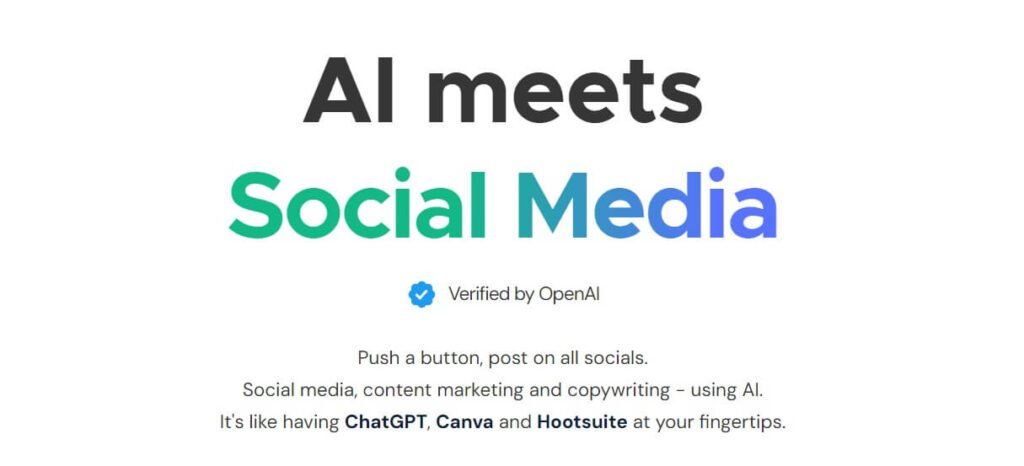
- AI writes your posts and captions, in 26 languages no less! No more staring at a blank page, just relevant, engaging content at your fingertips.
- Schedule posts for the perfect time, ensuring maximum reach and engagement. Ocoya knows the best time to post on each platform – you just sit back and watch the likes roll in.
- Track your content’s performance with detailed analytics. Find out what’s working and what’s not, optimize your strategy for maximum impact.
Ocoya does more than just write:
- Create eye-catching visuals with Canva integration.
- Seamlessly manage e-commerce with Shopify and WooCommerce.
- Collaborate with teams and clients for effortless campaign planning and review.
Ocoya plays well with others:
- Officially partnered with top platforms like Facebook, Instagram, Twitter, LinkedIn, and TikTok.
- Integrations galore: from design tools like Canva to marketing platforms like Shopify, Ocoya has you covered.
4. Tweetify
Tweetify is your AI-powered sidekick for transforming long-winded content into captivating social media gold, in just one click.
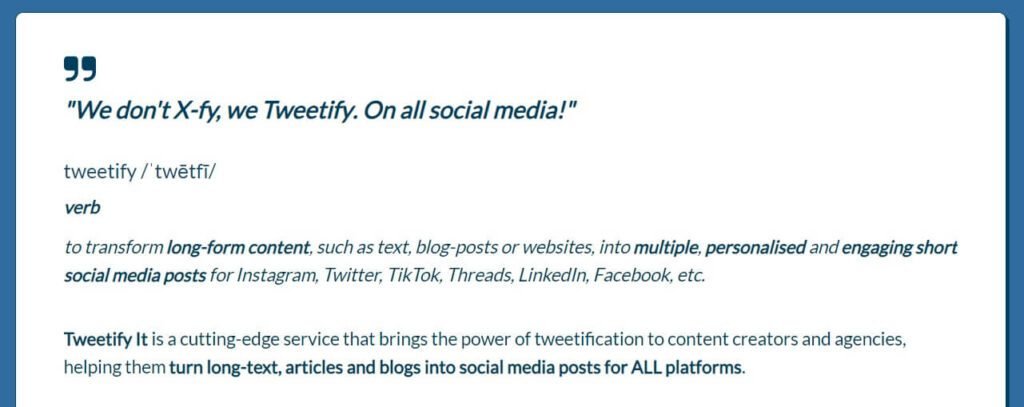
- Free for life: No hidden fees, no subscriptions, just a lifetime gift of free credits to get you started.
- Smart Summarizer: Tweetify It doesn’t just chop words, it intelligently condenses your content, preserving the essence and impact.
- Personalize Your Voice: Set the tone, choose the topics, make your tweets truly yours.
- Multilingual Master: Speak to the world. Tweetify It understands and translates between different languages, breaking down language barriers like a champ.
- Privacy First: Breathe easy, your precious data is safe and sound. No tracking, no ads, no data mining, and passwords are never required.
Show Notes
This innovative AI-powered tool leverages the power of GPT4 to automate the creation of comprehensive and engaging show notes, freeing you to focus on what you do best – crafting captivating content.
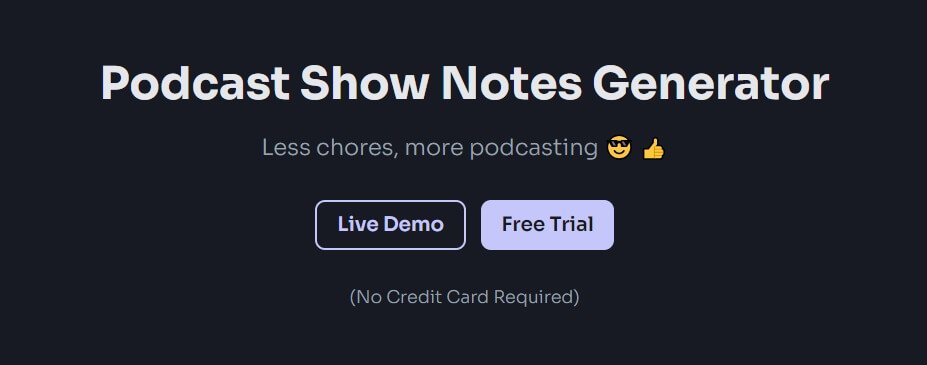
- Automated Summarization: Capture the essence of your episode with precise GPT4-powered summaries, covering 90% of your required content.
- Effortless Timestamping: Eliminate manual timestamps and ensure seamless navigation for your listeners.
- Enhanced SEO Optimization: Reach a wider audience with search engine optimized show notes that draw listeners in.
- Seamless Integrations: Simplify publishing with direct integrations for major podcast platforms like Apple Podcasts, Spotify, and Google Podcasts.
2. Podnotes
In just a few clicks, Podnotes generates a comprehensive suite of assets, maximizing efficiency and audience engagement.
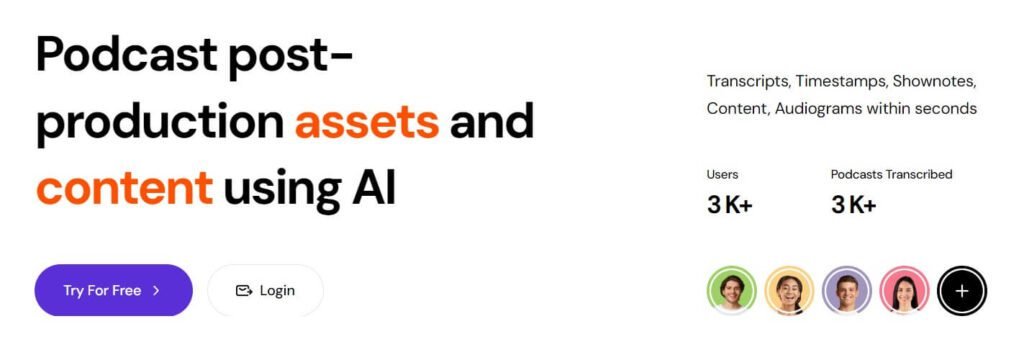
- Automated Transcription: Generate accurate and editable transcripts for both audio and video podcasts, enabling easy referencing and search.
- Speaker-Segregated Timestamps: Navigate specific podcast sections effortlessly with timestamps automatically assigned to individual speakers.
- Customizable Outputs: Tailor the language, style, and length of your transcripts, show notes, and other outputs to match your brand and audience preferences.
- Content Generation: Beyond transcription, Podnotes helps you craft compelling content:
- Generate engaging social media posts, key topics, and actionable insights directly from your podcast.
- Leverage custom prompts to create unique, high-quality content tailored to your needs.
- Seamlessly integrate content generation across multiple languages.
- Magic Chat: Interact with your podcasts through an AI assistant. Perform contextual searches, ask questions, and retrieve information for streamlined referencing.
3. Podsqueeze
PodSqueeze is your go-to tool for generating diverse, SEO-optimized content from your podcast episodes, with just a few clicks.

- Instant Episode Processing: Select an episode from your RSS feed and watch as AI magically produces a wealth of content.
- AI-Generated Show Notes: No more manual note-taking. Get comprehensive, engaging show notes that capture key points and keep listeners engaged.
- Precise Timestamps: Easily navigate specific sections of your podcast with automatically generated timestamps.
- Newsletter Magic: Craft captivating newsletters directly from your episode content, keeping your audience informed and connected.
- Blog Post Powerhouse: Generate three unique SEO-friendly blog post options, tailored to your episode and ready to publish. Choose the perfect fit and drive website traffic and inbound links.
3. Audiograms
1. GetAudiogram
Getaudiogram transforms your podcast episodes into captivating video snippets, boosting engagement and reach in a flash.
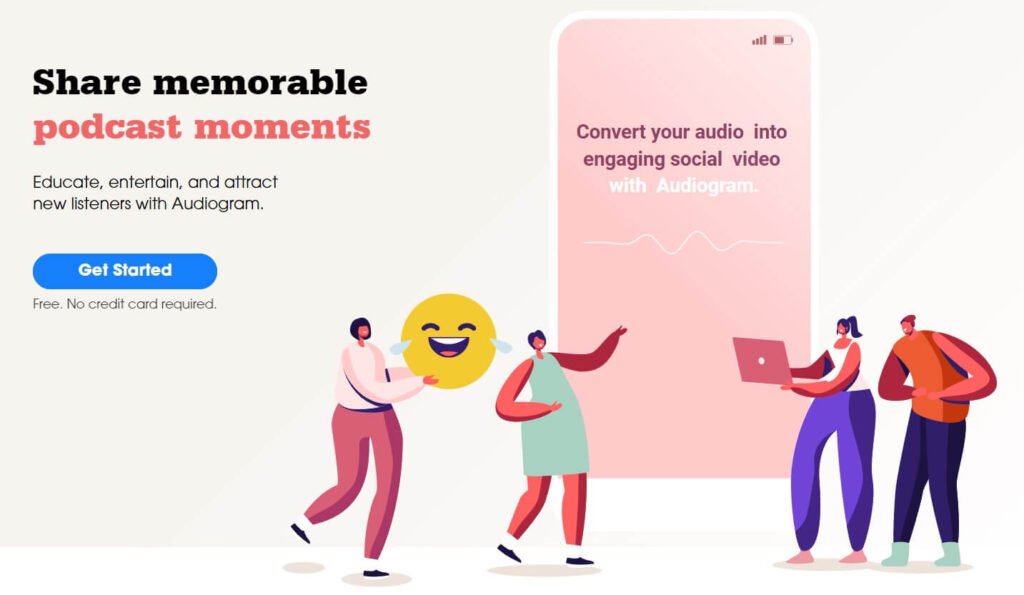
- Transforming dry audio into dynamic visuals: Animated waveforms, quotes, and speaker highlights make your podcast pop.
- Reaching a wider audience: Videos capture attention faster, drawing in new listeners on platforms like Facebook, Instagram, and TikTok.
- Saving time and resources: Forget manual editing! Getaudiogram does the heavy lifting, leaving you free to create.
- Boosting engagement and shares: Eye-catching videos spark curiosity and drive conversation, increasing your reach organically.
2. Deciphr
Deciphr AI is your go-to AI partner, streamlining your podcast workflow and transforming audio into captivating content – faster than ever.
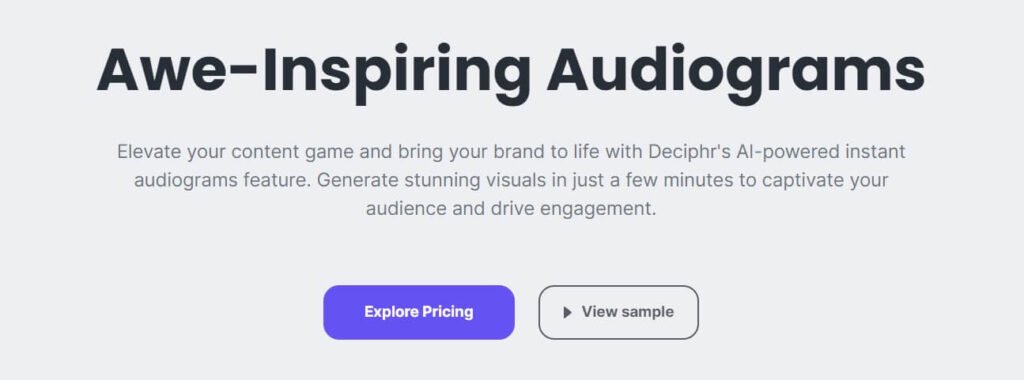
- Time warp activated: Ditch tedious note-taking and get detailed timestamps and show notes in minutes, saving you 8+ hours of work.
- Content creation on autopilot: Upload your audio or transcript, and watch Deciphr AI weave its magic, freeing you to focus on what matters – creating amazing content.
- Scale your podcasting power: Deciphr handles your workload, letting you crank out more episodes without sacrificing quality.
But Deciphr isn’t just a note-taking superhero:
- Turn audio into eye candy: Create visually stunning audiograms in a flash, grabbing attention on social media and boosting engagement.
- Boost your SEO: Deciphr optimizes your show notes and audiograms, so new listeners find you easily.
- End-to-end encryption: Sleep easy knowing your content is safe and secure.
3. Headliner
Headliner is your secret weapon, transforming your episodes into dynamic video snippets that grab attention and boost engagement.
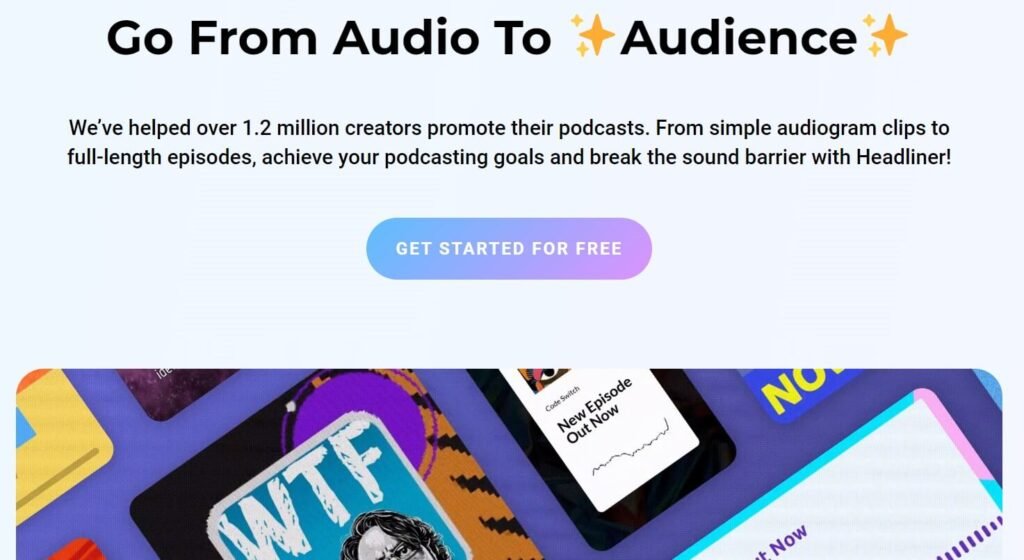
- From audio to video magic: Headliner adds animated waveforms, quotes, and speaker highlights, making your podcast pop on social media.
- Reach a wider audience: Videos get more views and shares than just audio, helping you attract new listeners on platforms like Facebook, Instagram, and TikTok.
- Save time and resources: Forget manual editing! Headliner does the heavy lifting, leaving you free to create.
- Boost engagement and shares: Eye-catching videos spark curiosity and drive conversation, increasing your reach organically.
How to Create Audiograms and Transcribe Audio with Headliner
4. VEED.IO
VEED.IO’s audiogram maker is your secret weapon, transforming your episodes into eye-catching video snippets that explode with engagement.
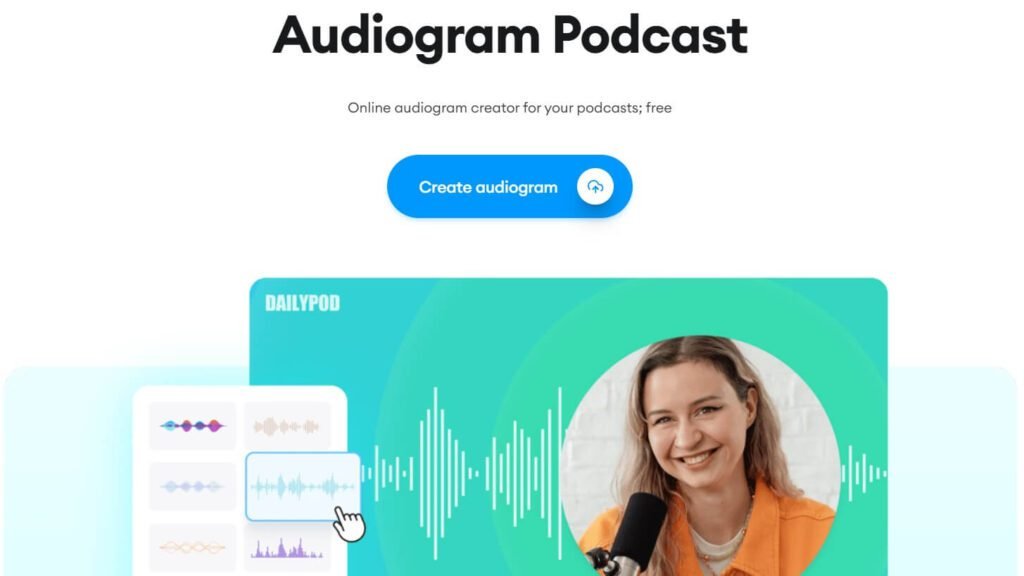
- Waveforms that dance, animated captions that sync perfectly, and speech bubbles that bring your audio to life – VEED.IO makes your podcast visually irresistible.
- Music and images? Absolutely. Inject personality and context with custom visuals and background tunes.
- Reach a wider audience: Videos get more views and shares than just audio, attracting new listeners on platforms like Facebook, Instagram, and TikTok.
- Effortless and efficient: VEED.IO’s AI magic does the heavy lifting, leaving you free to create.
4. Email Promotions
1 . Hoppy Copy
Ditch the writer’s block and leapfrog competitors with Hoppy Copy, your AI-powered marketing copywriting sidekick.

- AI Copywriter: Generate high-performing email copy in seconds, with formulas scientifically proven to boost open rates and click-throughs.
- AI Copy Editor: Polish your prose with AI suggestions for clarity, conciseness, and impact.
- Competitor Monitor: Stay ahead of the curve by tracking your rivals’ email strategies.
- Spam Checker: Ensure deliverability and maximize inbox visibility with built-in spam screening.
- Content Converter: Breathe new life into existing content by repurposing it into fresh email campaigns.
2. Copy.ai
Craft enticing email headlines, subject lines, and even entire email body copy based on your podcast episode’s key takeaways.
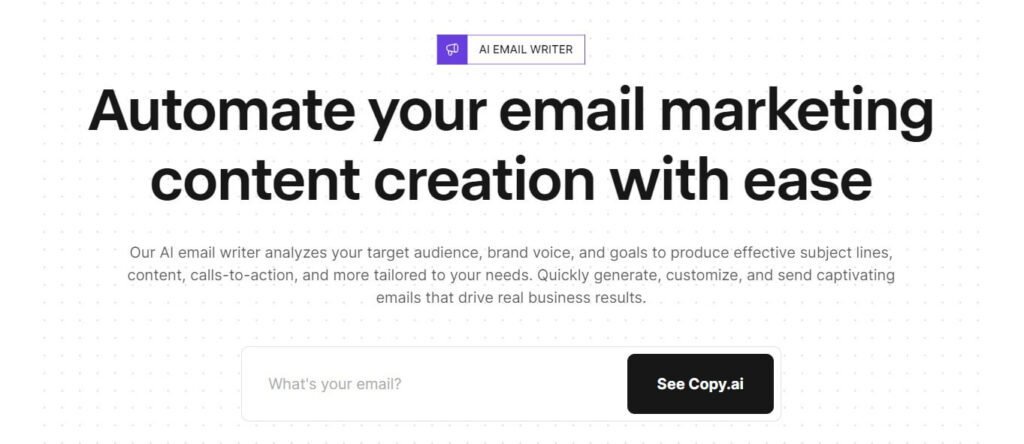
- Say goodbye to blank pages: Generate instant, high-quality content for ads, blog posts, product descriptions, social media captions, and more.
- Tap into AI’s magic: Let AI handle the heavy lifting, while you focus on refining and adding your unique touch.
- Break through creative blocks: Get fresh ideas and overcome writer’s fatigue with a toolkit of AI-powered writing tools.
- Simplify your workflow: Save time and resources by skipping lengthy brainstorming sessions and manual writing.
- Scale your content creation: Generate tons of unique content without sacrificing quality, letting you reach a wider audience.
3. Podsqueeze
PodSqueeze is your go-to tool for generating diverse, SEO-optimized content from your podcast episodes, with just a few clicks.

- Instant Episode Processing: Select an episode from your RSS feed and watch as AI magically produces a wealth of content.
- AI-Generated Show Notes: No more manual note-taking. Get comprehensive, engaging show notes that capture key points and keep listeners engaged.
- Precise Timestamps: Easily navigate specific sections of your podcast with automatically generated timestamps.
- Newsletter Magic: Craft captivating newsletters directly from your episode content, keeping your audience informed and connected.
- Blog Post Powerhouse: Generate three unique SEO-friendly blog post options, tailored to your episode and ready to publish. Choose the perfect fit and drive website traffic and inbound links.
3. Social Media Calendar
Create a social media calendar for the podcaster with templates they can use to schedule their posts.
Creating a social media calendar can be tedious, but several AI tools can automate the process and even provide templates for podcasters to easily schedule their posts across various platforms.
Here are some options:
1. Hookle
Hookle is your all-in-one assistant for crushing social media like a pro.
Create eye-catching content in seconds.
Its AI whiz suggests post ideas, hashtags, and emojis that match your brand voice. No more brainstorming fatigue.
Manage all your social channels (Facebook, Instagram, Twitter, Pinterest) from one place. Less switching, more winning.
Schedule your posts and stories, then relax. Post at the perfect time, even when you’re busy.
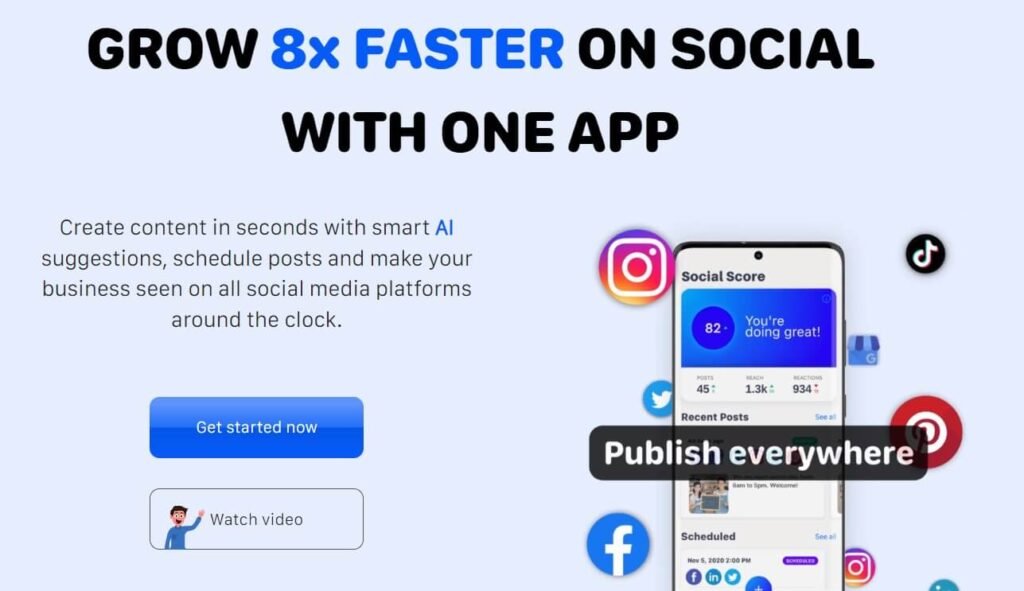
Hookle is your secret weapon for:
- Saving time and staying focused
- Creating engaging content with ease
- Managing multiple platforms like a champ
- Growing your brand and reaching new audiences
2. Followr
This AI-powered platform streamlines your social media strategy, saving you time and boosting engagement across all your channels.
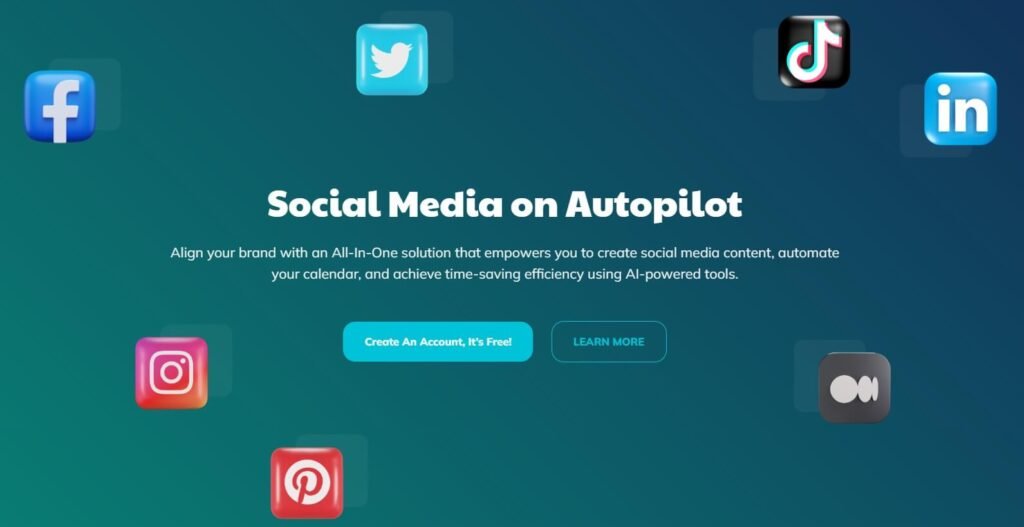
- Effortlessly scheduling posts across Twitter, Instagram, Facebook, LinkedIn, YouTube, and Medium from a single centralized dashboard. Say goodbye to constant context switching and hello to laser focus.
- Creating high-performing content with the help of Followr’s AI optimization. It analyzes your audience and suggests engaging topics, hashtags, and even visuals to make your posts shine.
- Gaining deep insights into your social media performance with comprehensive analytics. Track audience engagement, identify trends, and understand your target market like never before.
- Predicting future trends and staying ahead of the curve with Followr’s powerful predictive analytics. Make informed decisions about your content and strategy, always one step ahead of the competition.
Followr caters to everyone, from solopreneurs to large corporations. They offer flexible pricing plans, including a free option to get you started. Plus, their commitment to security and privacy ensures your data is always safe.
3. Postus
Postus is your AI-powered social media content creation and scheduling sidekick.
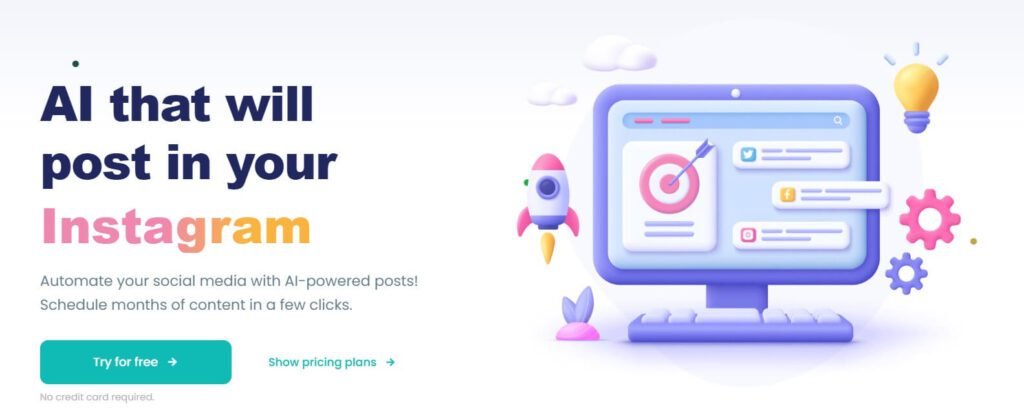
- Scheduling months of content in minutes with just a few clicks. No more scrambling for ideas or late-night posting frenzies. ️
- Generating high-quality, engaging posts tailored to your brand and audience. Ditch the generic templates and say hello to eye-catching visuals and captivating text that resonates with your followers.
- Freeing up your time to focus on what truly matters – growing your business. Let Postus handle the social media grind while you strategize, create, and connect with your audience.
Remember, AI is a powerful tool, but it shouldn’t replace your personal touch. Use these AI options to save time and spark inspiration, then add your own creative flair to make your repurposed content truly shine.
Benefits of Bundled Services:
By bundling these services together, you can offer a more valuable package to your clients and justify a higher price tag.
For example, you could charge $100, $200, or even more for a package that includes transcription, social media posts, and an audiogram.
Getting Started:
If you’re interested in trying this strategy, here are a few tips:
- Do your research: Learn about the different content repurposing and audiogram creation tools available. We have mentioned a few above. There are more online.
- Practice your skills: Try creating some sample social media posts, show notes, and audiograms to get a feel for what you can do.
- Promote your services: Let potential clients know that you offer more than just transcription. You can create a website or portfolio to showcase your work.
Additional Tips:
- In addition to the services mentioned in the video, you could also offer translation, editing, and proofreading services.
- Be sure to set clear expectations with your clients about what is included in your packages.
- Communicate effectively with your clients and deliver high-quality work.
Wrap-Up
By offering more than just transcription, you can attract higher-paying clients and increase your income.
So, what are you waiting for?
Give this strategy a try and see how much you can earn.









